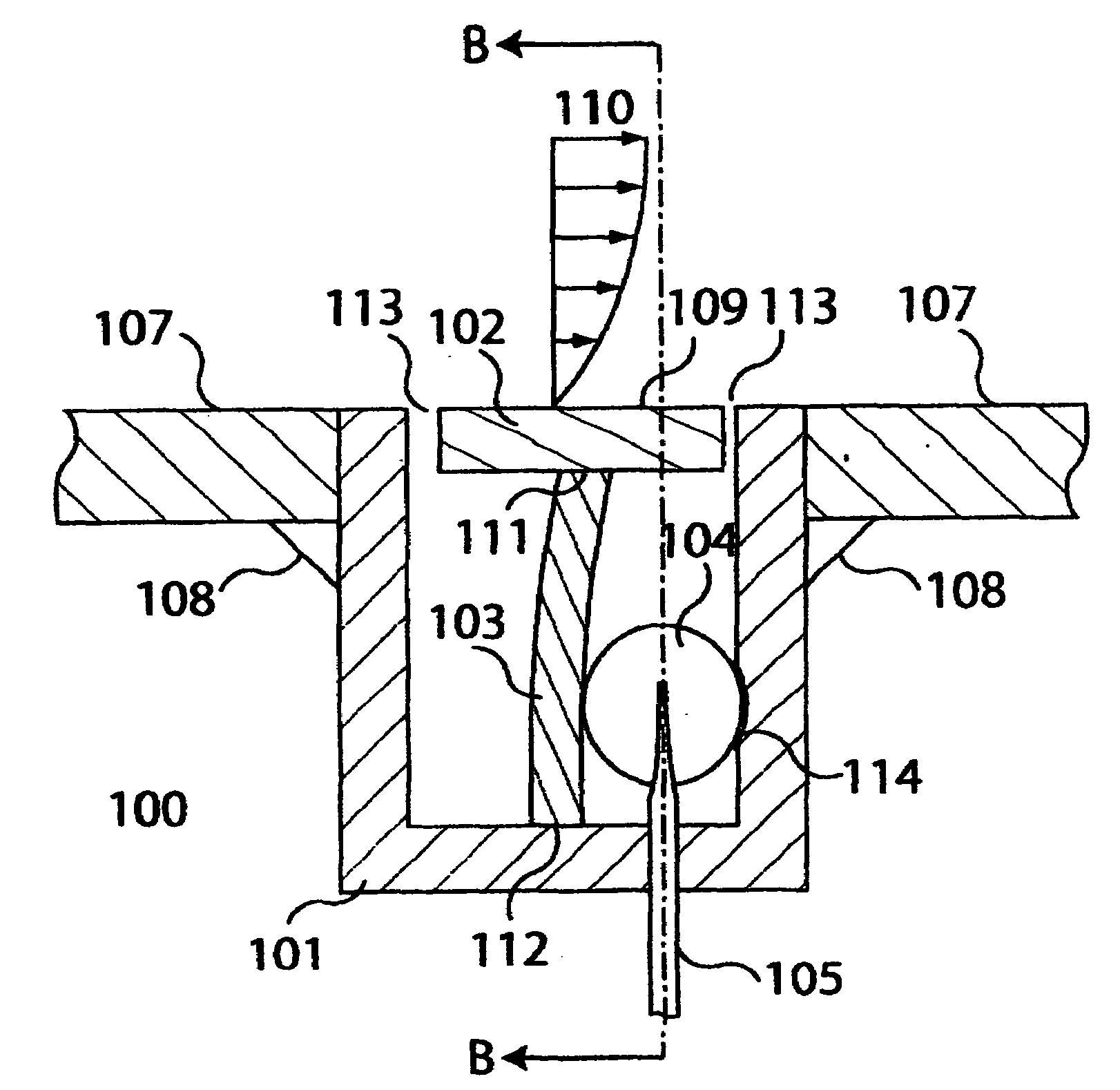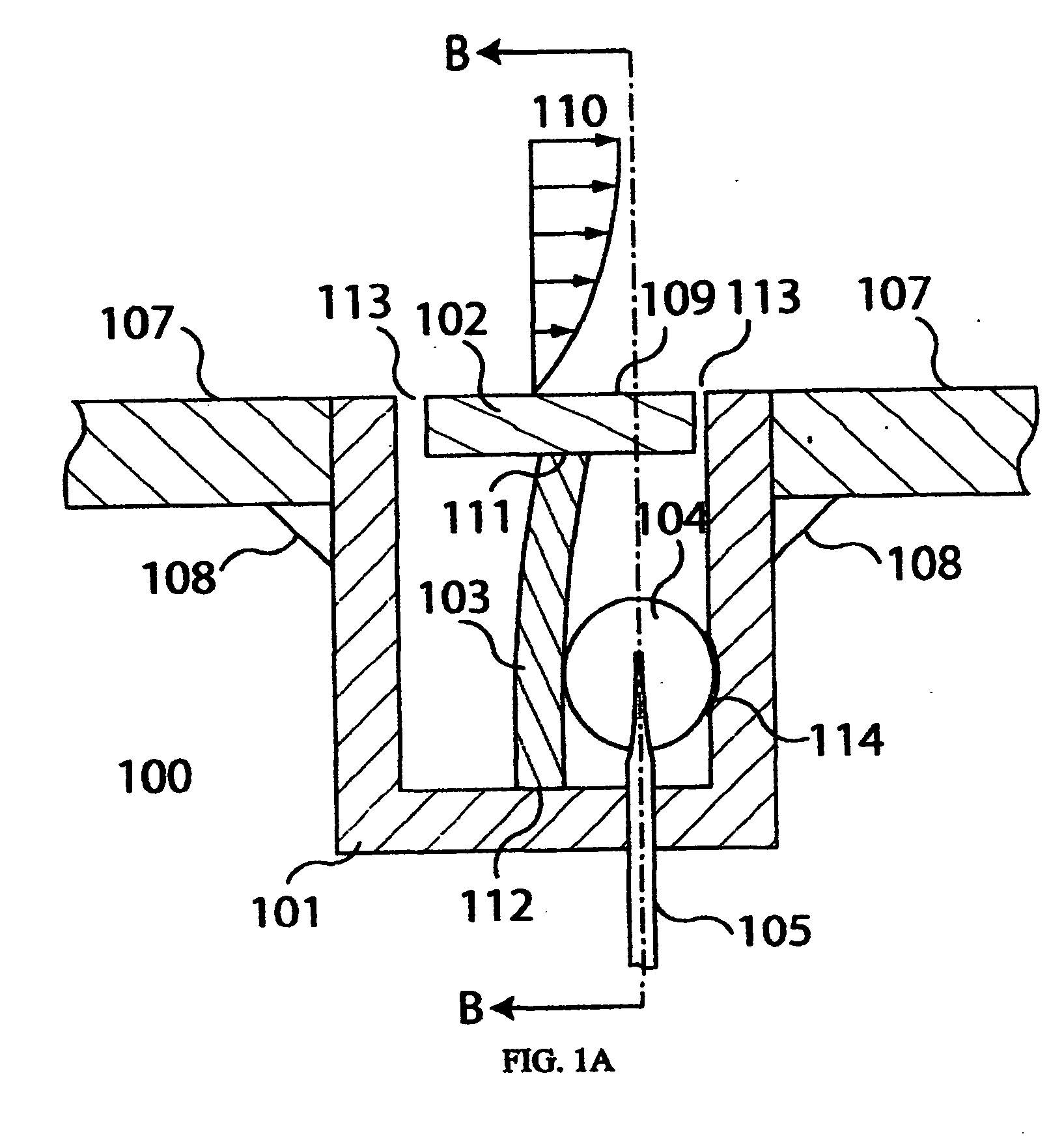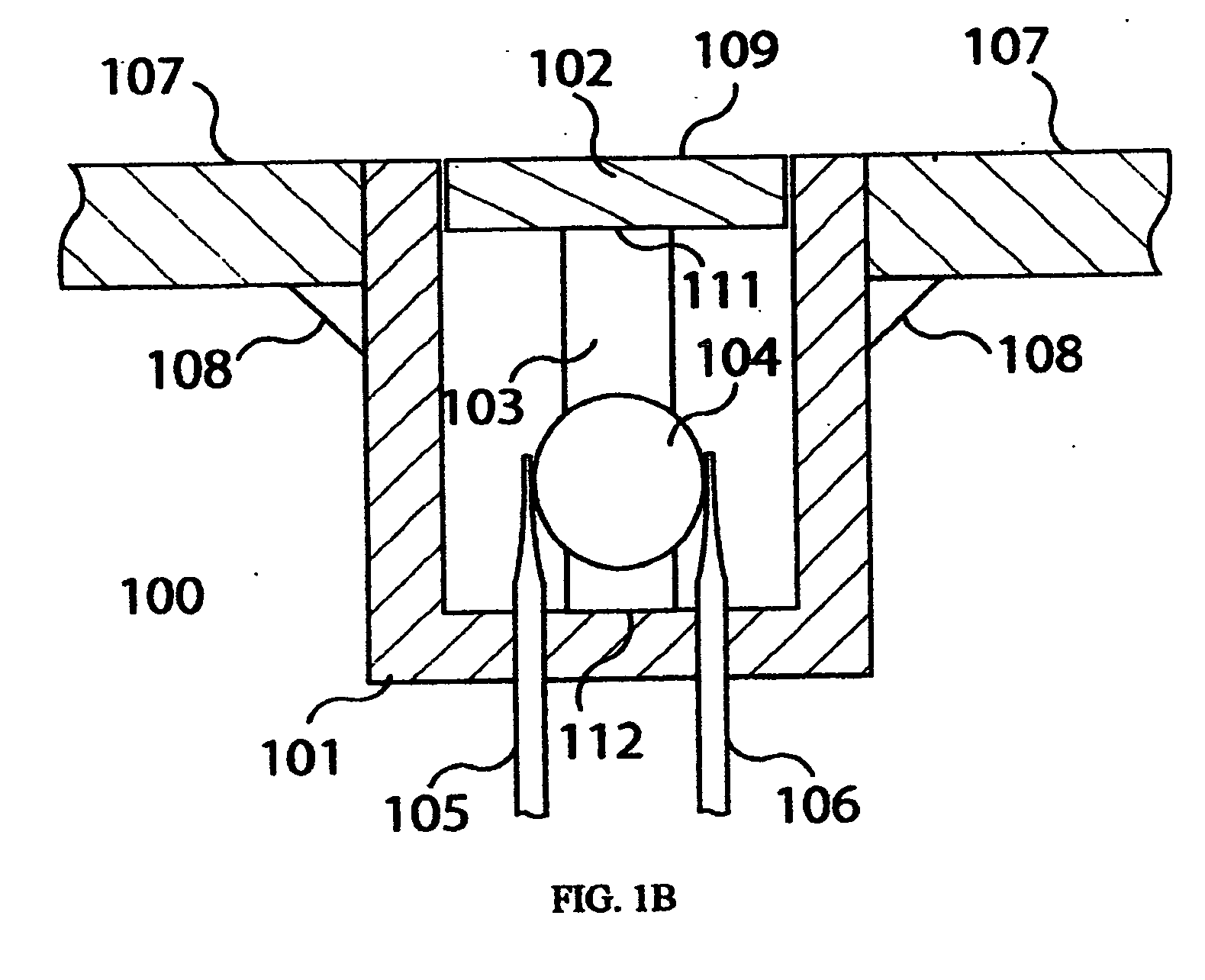Shear stress measurement apparatus
a technology of shear stress and measurement apparatus, which is applied in the direction of mechanical measuring arrangement, force measurement by measuring optical property variation, instruments, etc., can solve the problems of insufficient state of the art to meet all needs, insufficient development of models, and inability to accurately measure wall shear stress
- Summary
- Abstract
- Description
- Claims
- Application Information
AI Technical Summary
Benefits of technology
Problems solved by technology
Method used
Image
Examples
second embodiment
[0049]Micro-resonator 104 may be placed between lever member 103 and the inside wall of base element 101, as shown in FIG. 1A, or between a lever member 201 and a micro-resonator holder member 202, as shown in the FIG. 2, which illustrates shear stress sensor 200 constructed in accordance with the present invention. Components in FIG. 2, corresponding to components in FIGS. 1A and 1B, have been given the same reference numerals used in FIGS. 1A and 1B. Micro-resonator holder member 202 can be formed with an indentation 203 to hold micro-resonator 104 in place and prevent its movement. The position of micro-resonator 104 may be adjusted to initially stress preload (compress) the micro-resonator by means of a preload component, such as a setscrew 204, that moves micro-resonator holder 202 away from or back to the wall of base element 101.
[0050]A third embodiment of a shear stress sensor 300, constructed in accordance with the present invention, is illustrated in FIG. 3, in which compo...
fifth embodiment
[0053]FIG. 5 illustrates a shear stress sensor constructed in accordance with the present invention. The FIG. 5 shear stress sensor is similar to the shear stress sensor of FIGS. 1A and 1B, but adds an environmental sensor 501, for example a thermocouple or a thermistor, that is positioned in proximity to micro-resonator 104 to sense temperature change. Environmental sensor 501 serves in compensating for spectrum shift in the micro-resonator due to the influence of an environmental factor, such as temperature. If the dependence of the spectrum shift versus change in the environmental condition, such as temperature, is known, for example from a theoretical model or from calibration measurements, the measurement results can be adjusted according to the environmental sensor readings.
[0054]A second micro-resonator may serve as a reference for compensating for spectrum shift in micro-resonator 104 due to the influence of an environmental factor. This second micro-resonator would be insta...
PUM
| Property | Measurement | Unit |
|---|---|---|
| diameter | aaaaa | aaaaa |
| distance | aaaaa | aaaaa |
| size | aaaaa | aaaaa |
Abstract
Description
Claims
Application Information
 Login to View More
Login to View More - R&D
- Intellectual Property
- Life Sciences
- Materials
- Tech Scout
- Unparalleled Data Quality
- Higher Quality Content
- 60% Fewer Hallucinations
Browse by: Latest US Patents, China's latest patents, Technical Efficacy Thesaurus, Application Domain, Technology Topic, Popular Technical Reports.
© 2025 PatSnap. All rights reserved.Legal|Privacy policy|Modern Slavery Act Transparency Statement|Sitemap|About US| Contact US: help@patsnap.com



